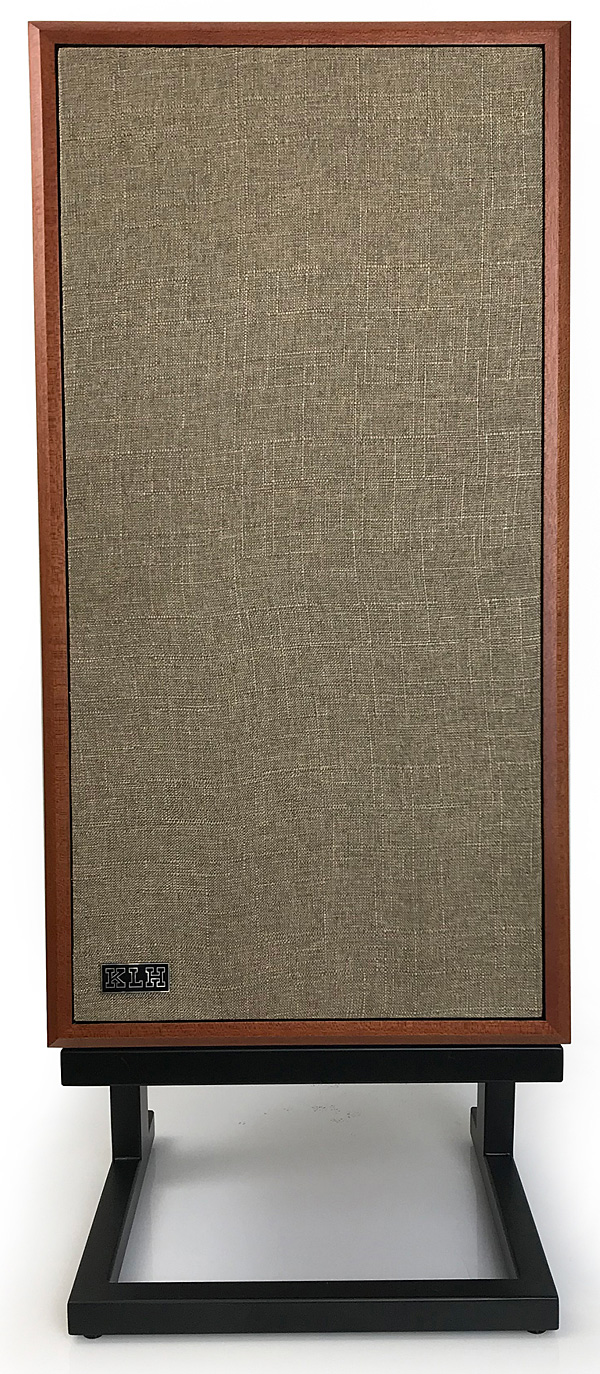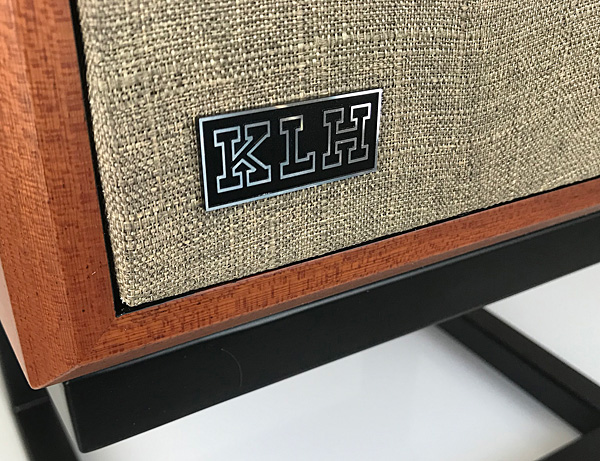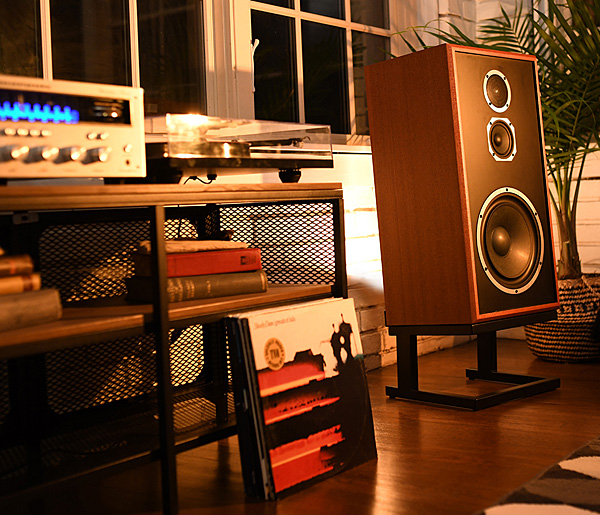Noise Level: Some motors can be quite loud, which can be a nuisance when you're out on the water. Consider choosing a motor with a low noise level if you want a quieter boating experience. https://inflatableaddition.com/best-inflatable-life-jacket/
KLH Model Five Loudspeaker Review Page 2
Setup
I set the Model Fives up about 9 feet apart and roughly 4 feet out from my room's back wall, angling them in at the primary listening seat. The tilt of the included stands allowed for the tweeters to be aimed approximately at my seated ear height. I initially used a Denon AVR- X6700H receiver for my setup, and it performed extremely well with the KLHs. But to feed them a little more power, I ended up using the Denon's left and right preamp outputs to drive two channels of a Parasound Halo A52+ multichannel power amp. All music used for my evaluation was from CDs played on a Marantz UD7007 player.

As I've mentioned in previous speaker reviews, my very large room provides less than ideal deep bass support for full-range speakers. It also adds modal peaks between 100Hz and 200Hz as measured at the listening position. The only method I've found to correct these issues is room EQ.
But before going there, I first spent time with the Model Fives driven full-range without EQ of any sort. The low end was enticingly tight and punchy, particularly the high overtones that lend character to drums, organs, and synthesized bass in electronic music. But I wasn't hearing the true weight of these instruments in my room. If EQ could be added to fill out the low-bass balance without adverse side effects, that would be a strong indication that the speakers themselves, in a smaller room than mine, would have what it takes to deliver the full frequency range. (Apart, of course, from below 30-40Hz— subwoofer territory—which is exceptionally rare with any standalone loudspeaker.)
To free the Model Fives (as much as possible) up from my room's bass issues, I used Denon's Audyssey MultEQ XT32 EQ, applying it only below 300Hz. The Model Fives were left untreated by room EQ above that frequency. (For more on the whys and wherefores of this, see my review of the PSB Synchrony 600T tower loudspeaker.) Most bass problems (apart from a speaker's low-end limitations and distortion) below a given frequency are caused more by the room than the loudspeaker. The issues will depend on the characteristics of room itself, but typically occur below 200-500Hz.

Audyssey had to apply a significant bass boost to the Model Fives to provide useful bass extension in my room, so I also used the app's flexible target function to dial in a sharp roll-off below 40Hz. This let them provide useful output to under 40Hz, which is KLH's approximate low-end frequency response spec for the Fives.
Performance
Recall what I said above about the original KLH Model Five featuring a tweeter that was selected based on its limited high-frequency extension? That's not the case with this version at all. No one will ever accuse the new Model Five of being a shrinking violet when it comes to detail and dynamic range. In fact, the KLH might not be an ideal choice for listeners who prefer a richer sound with subdued detail, because this tweeter reveals everything.
You wouldn't expect explosive dynamics from a recording that begins as little more than Baroque chamber music, but Gregorio Paniagua's La Folia de la Spagna (Harmonia Mundi, 1982) is something very different. It might be better described as a chamber concert with a heavy helping of Spike Jones. After a few sedate minutes the music is suddenly punctuated by startling percussion riffs, cars, church bells, buzz saws, and even the musicians occasionally chattering among themselves. The Fives handled all of this with ease, effortlessly rendering the recording's huge dynamic range and precise soundstage.

The Model Five also excelled on female vocal recordings. Sophie Zelmani's "How it Feels" (from the album Sing and Dance) and Sinne Eeg's "My Treasure" (from Waiting for Dawn) both sounded warm, smooth, and uncolored, with just the right touch of the sibilance that's typical for pop recordings due to close-miking.
Listening to Dead Can Dance's In Concert, the ambience of the venue, together with the audience reactions, were clearly sculpted by the Model Fives. The soundstage wasn't pinpoint, but this was clearly the intent for the recording's mix and no shortcoming of the speakers, whose abilities in that regard had already been convincingly demonstrated. In Concert was accurately presented by the Model Fives as a huge sonic bubble. If the experience wasn't exactly as enveloping as what a surround sound system might offer, it was nevertheless big, rich, and highly involving.
The Model Five's bass won't tempt you to you sell your subwoofer, though I did find it satisfying on music. Recordings of Japanese Taiko drums sounded hard-hitting, without mud or boom. And while it was clear that the KLHs wouldn't rattle the teacups in my kitchen when I popped in a good recording of Bach's Toccata and Fugue in D-minor (Jean Guillou, Dorian Recordings), it was also true that their bass would engage all but the most rabid organ fanatics.

This isn't a review of a surround-sound speaker package, but I did do some movie viewing using the Model Fives with no subs, a phantom center, and a pair of small surrounds. The results were mixed depending on the source, but I had to tread carefully with a bass-heavy title like Blade Runner 2049, dialing back the Denon's volume and bass controls to avoid eliciting rude or even disturbing noises from the woofers. All this will depend very much on the size of your room (and how much, if any, room EQ you require), but if you regularly watch bass-heavy movies, the Model Fives alone will be no substitute for one or more good subwoofers.
Conclusion
I enjoyed the many hours I spent listening with the KLH Model Fives. Is it the perfect loudspeaker? The tweeter in the new Model Five is likely to be far more revealing than the one found in the original, so if your taste leans toward warm and forgiving sound, this might not be the best choice. But if you want to hear all the detail present in well-produced music, along with fulfilling, dynamic performance across the full frequency range, you won't be disappointed.
- Log in or register to post comments


I've been wanting to improve the sound in my living room for a long time, but I kept putting off buying a soundbar. When I finally decided, it turned out that choosing wasn't that easy - some stores had inflated prices, while others had outdated models. I started looking for reviews and came across the FactoryOutletStore electronics store. The selection was good, the prices were reasonable, and most importantly, the soundbar I needed was in stock. They processed the order quickly and delivered it without any problems. Now movies and music sound completely different - the sound has become voluminous and rich!






























































